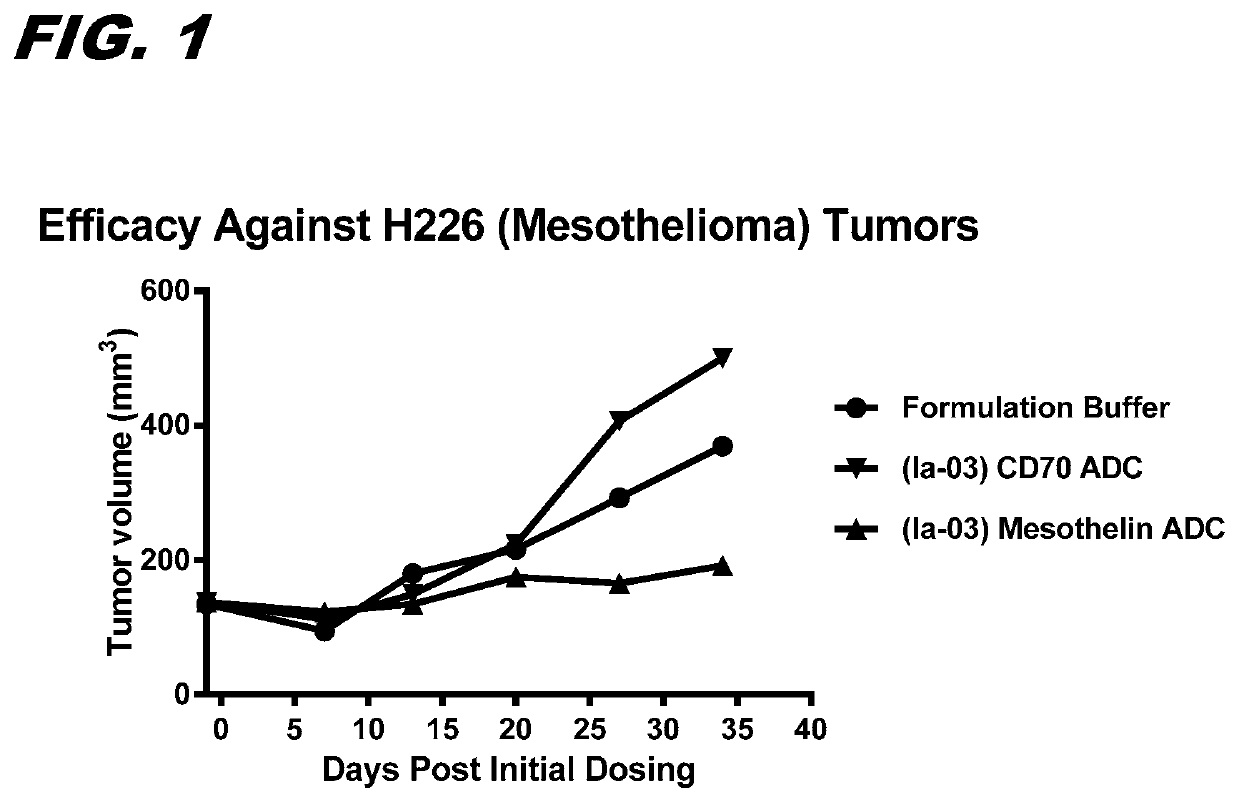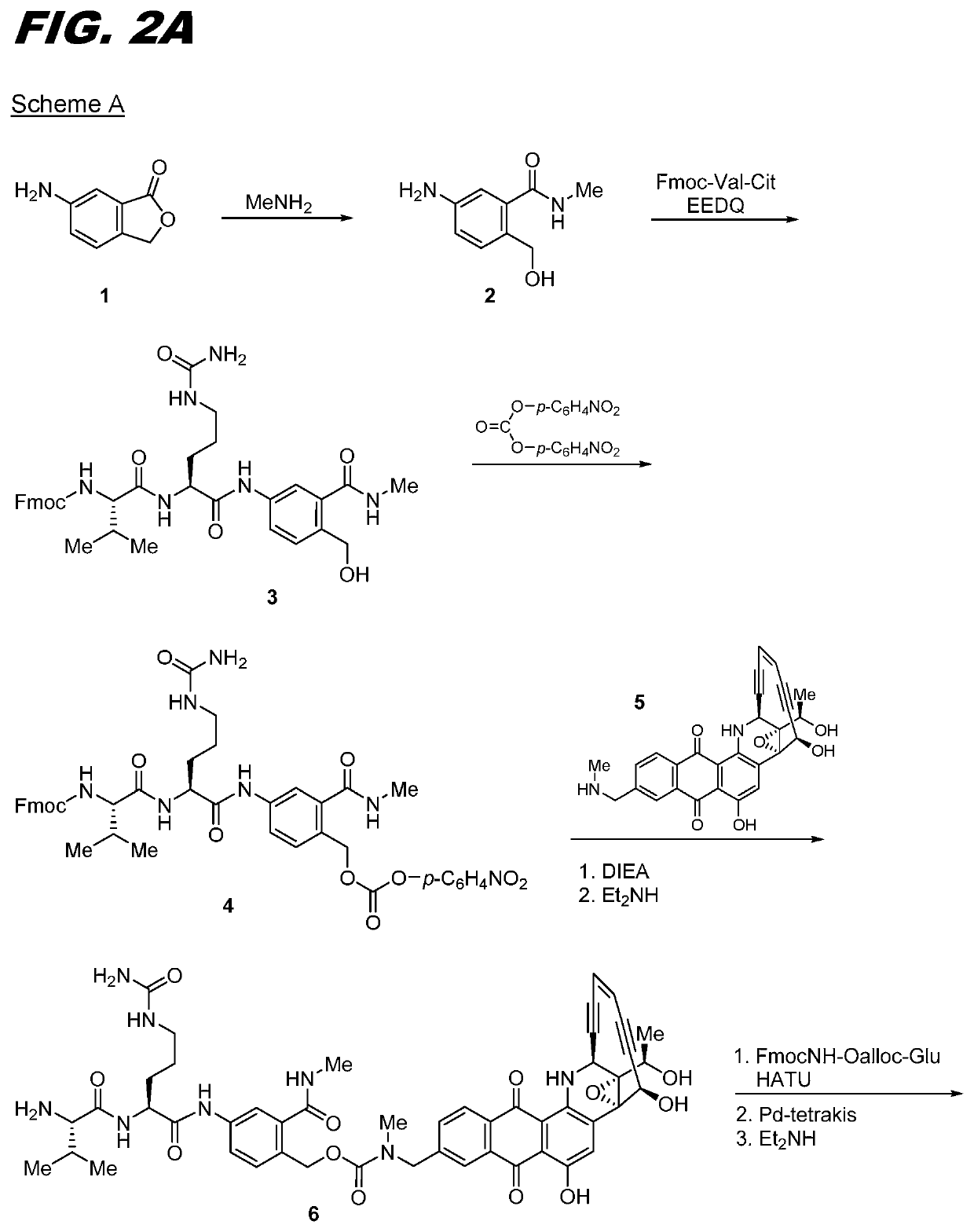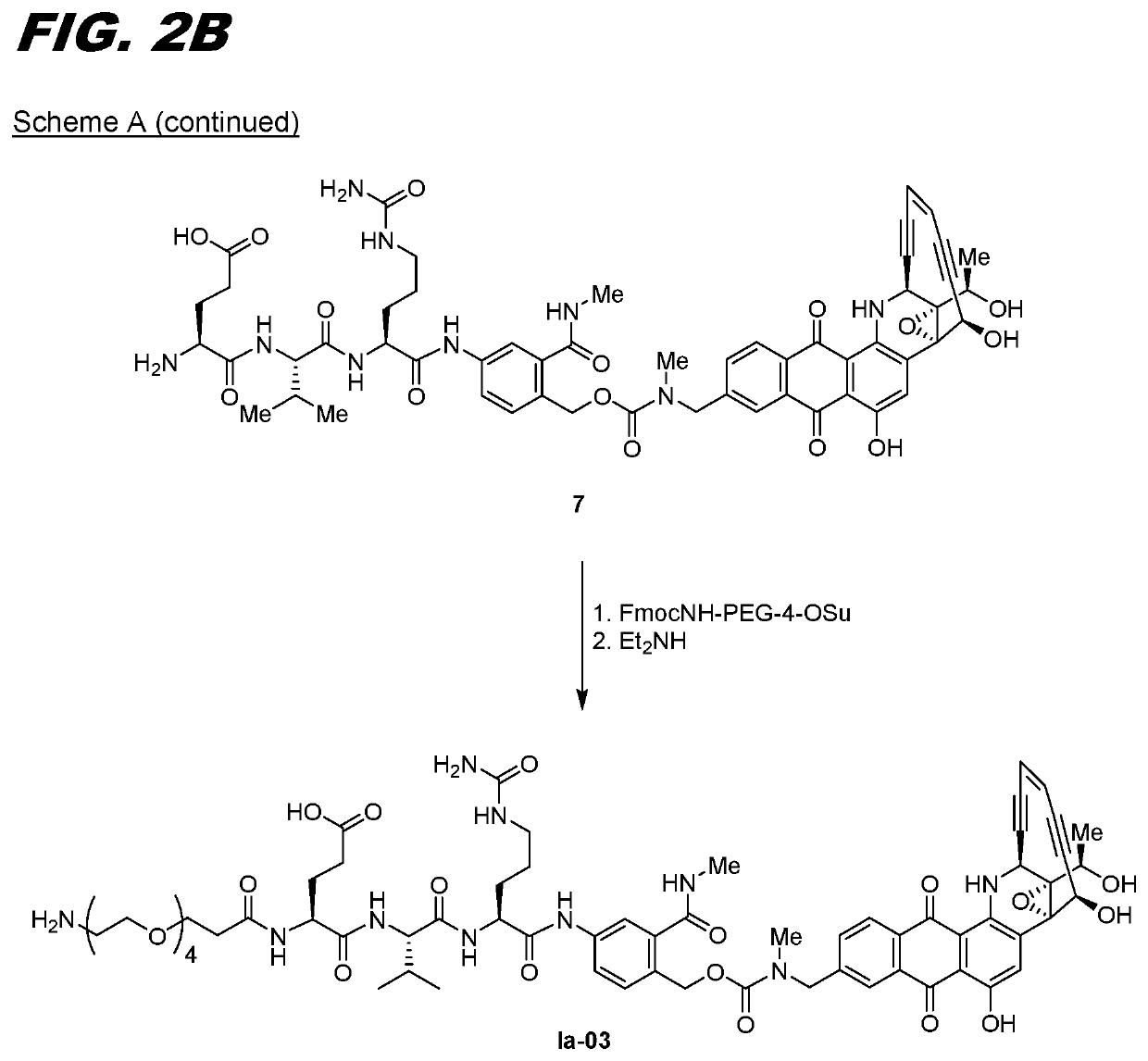Modified self-immolating moieties for use in prodrugs and conjugates and methods of using and making
a technology of self-immolating moieties and conjugates, which is applied in the direction of drug compositions, antineoplastic agents, pharmaceutical non-active ingredients, etc., can solve the problem of difficult to achieve absolute selectivity, and achieve the effect of preventing the cleavage of the attached peptide moiety, modulating the susceptibility to protease cleavage, and slowing down the cleavage ra
- Summary
- Abstract
- Description
- Claims
- Application Information
AI Technical Summary
Benefits of technology
Problems solved by technology
Method used
Image
Examples
example 1
um Stability
[0167]The following procedure was used for testing the blood serum stability of linkers in mouse, rat, or human serum
[0168]5 μL of text compound (0.5 mM in DMSO) was transferred separately to individual tubes containing 120 μl of 1× phosphate buffered saline, mouse, rat or human serum. The samples were incubated at 37° C. for 0, 1, 2, 4, and 24 hours. After each of the time points, an aliquot of 20 μl was taken from the samples and quenched with 60 μl of 75:25:0.1 MeOH:acetonitrile:formic acid. After quenching, all samples were held at −20° C. for 1 hour and further centrifuged at 14000 rpm for 15 mins. The supernatant was transferred to a fresh vial and stored at −20° C. until analysis.
[0169]Samples were analyzed using LC-MS / MS on Agilent 6530 Q-TOF mass spectrometer connected to an Agilent 1290 UPLC. 3 μL of samples were injected onto a Waters BEH C18 Column (2.1×50 mm, 1.7 μm) maintained at 60° C. The compounds were eluted from column at a flow rate of 0.4 mL / min, usi...
example 2
B Cleavage
[0170]The following procedure was used for testing the cathepsin B cleavage of linkers.
[0171]7.5 μL of test compound (0.5 mM in DMSO) was transferred to individual tube containing 135 μl of Cathepsin B buffer (25 mM Sodium Acetate, 1 mM EDTA, 1 mM DTT, pH 5.5) and the digestion was started by the addition of 7.5 μl of the diluted Cathepsin B enzyme (Activated, 1.45 μM, 0.1 units). The samples were incubated at 37° C. for 24 h. After 24 h, a 20 μL aliquot was taken and quenched with 80 μL of 75:25:0.1 MeOH:acetonitrile:formic acid. Negative control was also included, without the addition of Cathepsin B. A control compound (structure below) was digested similarly and included as positive control. After quenching, all samples were held at −20° C. for 1 h and further centrifuged at 14,000 rpm for 5 min. The supernatant was transferred to a fresh tube and put in an UPLC autosampler for analysis, per the procedure of the preceding example.
[0172]
[0173]In the above structure, “Tub...
example 3
on of Conjugates Using Transglutaminase
[0174]The following procedure can be used for transglutaminase mediated conjugation of linker compounds wherein the linker has an amine group that can act as an amine donor (e.g., compounds Ia-02 through Ia-12 and Ib-01 through Ib-04). The antibody can be one that has a transglutaminase-reactive glutamine, for example one with an N297A or N297Q substitution. Conjugation is carried out by recombinant bacterial transglutaminase with a molar ratio of antibody:enzyme of 5:1. The conjugation is carried out using standard protocols in 50 mM Tris buffer, pH 8.0, incubated overnight at 37° C. The resulting conjugate is purified on a Protein A column, pre-equilibrated with 50 mM Tris, pH 8.0. The conjugate is eluted with 0.1 M sodium citrate buffer, pH 3.5. The eluted fractions are neutralized with 1M Tris pH 9.0. The conjugate can be formulated in 20 mg / mL Sorbitol, 10 mg / mL Glycine, pH 5.0.
[0175]FIG. 1 confirms that ADCs made with a modified SI moiety...
PUM
| Property | Measurement | Unit |
|---|---|---|
| flow rate | aaaaa | aaaaa |
| run time | aaaaa | aaaaa |
| pH | aaaaa | aaaaa |
Abstract
Description
Claims
Application Information
 Login to View More
Login to View More - R&D
- Intellectual Property
- Life Sciences
- Materials
- Tech Scout
- Unparalleled Data Quality
- Higher Quality Content
- 60% Fewer Hallucinations
Browse by: Latest US Patents, China's latest patents, Technical Efficacy Thesaurus, Application Domain, Technology Topic, Popular Technical Reports.
© 2025 PatSnap. All rights reserved.Legal|Privacy policy|Modern Slavery Act Transparency Statement|Sitemap|About US| Contact US: help@patsnap.com



